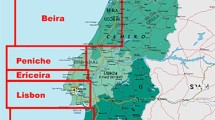Abstract
The total economic value of a coastal waterfront or coastal zone is important for policymakers and analysts concerned with coastal issues to evaluate policies that affect coastal management. A coastal waterfront as common goods is usually valuated with a measure of willingness to pay (WTP) for the improvement of coastal ecosystem functions from a demand side. However, there is a trend that the landscapes of a coastal waterfront like viewing the sea should be regarded as one of the property rights of coastal residents in Japan. Thus a coastal waterfront is necessarily evaluated with a measure of willingness to accept (WTA) the compensation for the loss of the accessibility to a coastal waterfront from a supply side because a number of empirical literatures show that WTP is usually substantially lower than WTA. This paper elicits the WTA for the loss of accessibility to coastal waterfronts using contingent valuation method provided that the accessibility should be regarded as one part of residents’ property rights. The result shows that the WTA in Tokyo bay is 65.3 million yen per household, more than ten times their annual household income. The total economic value of Tokyo bay is estimated as 539 trillion yen, which can be taken into consideration in the coastal risk assessment process to evaluate the efficiency of coastal risk reduction measures.
Similar content being viewed by others
References
Ahmed M, Umall GM, Chong CK, Rull MF, Garcia MC (2006) Valuing recreational and conservation benefits of coral reefs—the case of Bolinao, Philippines. Ocean Coast Manag 50:103–118. doi:10.1016/j.ocecoaman.2006.08.010
Bateman LJ, Willis KG (2001) Valuing environmental preferences. Oxford University Press, London
Bateman LJ, Carson RT, Day B, Hanemann M, Hanley N, Hett T, Jones-Lee M, Loomes G, Mourato S, Ozdemiroglu E, Pearce DW, Sugden R, Swanson J (2002) Economic valuation with stated preference techniques: a manual. Edward Elgar, Cheltenham
Breaux AM, Farber S, Day J (1995) Using natural coastal wetlands systems or wastewater treatment: an economic benefit analysis. J Environ Manage 44:285–291. doi:10.1006/jema.1995.0046
Carson RT, Mitchell RC (1989) Using surveys to value public goods: the contingent valuation method. Resources for the Future, Washington, D.C.
Datascape & Communication Inc. (2004) Kurofune 2004. Datascape & Communications Inc. 2004 (in Japanese)
Freeman AM III (1993) The measurement of environmental and resource value: theory and methods. Resources for the Future, Washington, D.C.
Genius M, Hatzaki E, Kouromichelaki EM, Kouvakis G, Nikiforaki S, Tsagarakis KP (2008) Evaluating consumers’ willingness to pay for improved potable water quality and quantity. Water Resour Manag. doi:10.1007/s11269-008-9255-7
Hanayama Y, Watanabe T, Masuyama K (1985) Integrated management of Tokyo Bay environment. Kogai Kenkyu 14(4):14–33 (in Japanese)
Hanemann M (1991) Willingness to pay and willingness to accept: how much can they differ? Am Econ Rev 81:635–647
Hanemann M (1999) The economic theory of WTP and WTA. In: Bateman I, Willis KG (eds) Valuing environmental preferences: theory and practice of the contingent valuation method in the US, EU, and developing countries. Oxford University Press, Oxford, pp 42–96
Horowitz JK, McConnell KE (2002) A review of WTA/WTP studies. J Environ Econ Manage 44:426–447. doi:10.1006/jeem.2001.1215
Kawabe M, Oka T (1996) Benefit from improvement of organic contamination of Tokyo Bay. Mar Pollut Bull 32(11):788–793, November
Kontogianni A, Langford IH, Papandreou A, Skourtos MS (2003) Social preferences for improving water quality: an economic analysis of benefits from wastewater treatment. Water Resour Manage 17(5). doi:10.1023/A:1025866818391
Mangione TW (1995) Mail surveys: improving the quality. SAGE publications
Payne JW, Schkade DA, Desvousges WH, Aultman C (2000) Valuation of multiple environmental programs. J Risk Uncertain 21(1):95–115. doi:10.1023/A:1026573527618
Pearce D (2002) The role of ‘property rights’ in determining economic values for environmental costs and benefits. Available at http://www.environment-agency.gov.uk/commondata/acrobat/wtawtp_pearce_1485692.pdf. Accessed 25 Jan 2007
Shabman LA, Batie SS (1978) Economic value of natural coastal wetlands: a critique. Coastal Waterfront Management Journal 48(3):231–247
Spurgeon J (1999) The socio-economic costs and benefits of coastal habitat rehabilitation and creation. Marine Pollut Bull 37(8–12):373–382, December
The Government Housing Loan Agency (2005) Survey on users of Flat 35. 2005. Available at http://www.jyukou.go.jp/ chisiki/chosa/images/riyou16a.pdf. Accessed 5 June 2006 (in Japanese)
Wattage P, Soussan J (2003) Incorporating environmental value and externality in project evaluation as a sustainability indicator to evaluate Bangladesh water development. Water Resour Manage 17(6). doi:10.1023/B:WARM.0000004957.49020.c3
Wei Y, Davidson B, Chen D, White R, Li B, Zhang J (2007) Can contingent valuation be used to measure the in situ value of groundwater on the North China plain? Water Resour Manage 21(10). doi:10.1007/s11269-006-9123-2
Yokohama City (2006) Statistics of Yokohama. Available at http://www.city.yokohama.jp/me/stat/. Accessed 2 June 2006 (in Japanese)
Zhai G, Ikeda S (2006) Flood risk acceptability and economic value of evacuation. Risk Anal 26(3):683–694. doi:10.1111/j.1539-6924.2006.00771.x
Zhai G, Fukuzono T, Ikeda S (2005) Modeling flood damage: case of Tokai flood 2000. J Am Water Resour Assoc 41(2):77–92. doi:10.1111/j.1752-1688.2005.tb03719.x
Zhai G, Sato T, Fukuzono T, Ikeda S, Yoshida K (2006) Willingness to pay for flood risk reduction and its determinants in Japan. J Am Water Resour Assoc 42(4):927–940. doi:10.1111/j.1752-1688.2006.tb04505.x
Author information
Authors and Affiliations
Corresponding author
Rights and permissions
About this article
Cite this article
Zhai, G., Suzuki, T. Evaluating Economic Value of Coastal Waterfront in Tokyo Bay, Japan with Willingness-to-Accept Measure. Water Resour Manage 23, 633–645 (2009). https://doi.org/10.1007/s11269-008-9292-2
Received:
Accepted:
Published:
Issue Date:
DOI: https://doi.org/10.1007/s11269-008-9292-2




